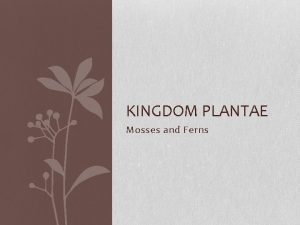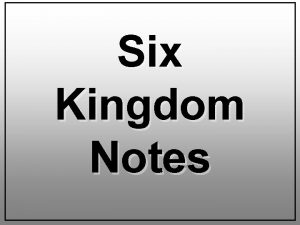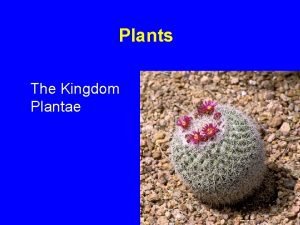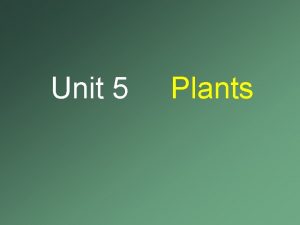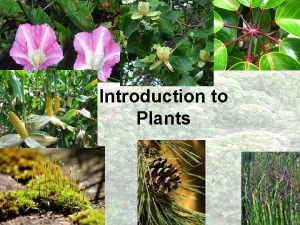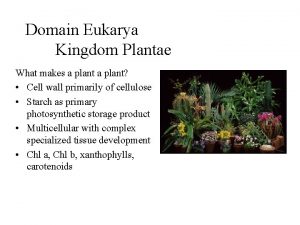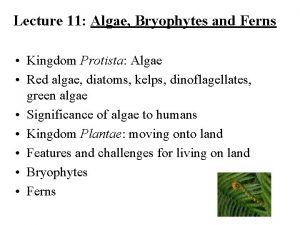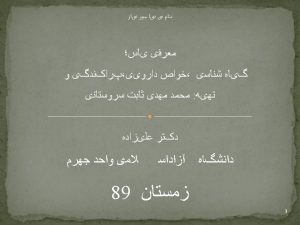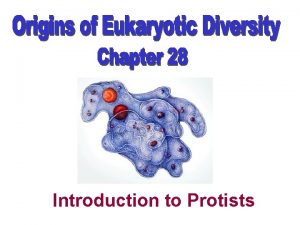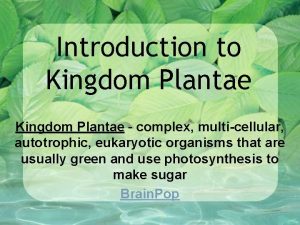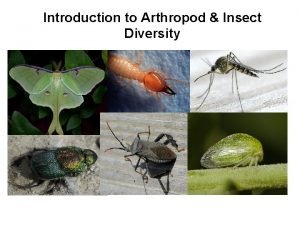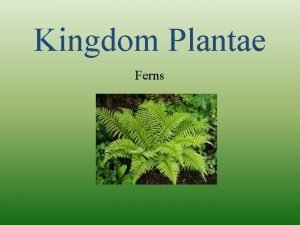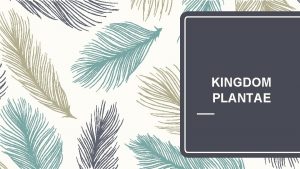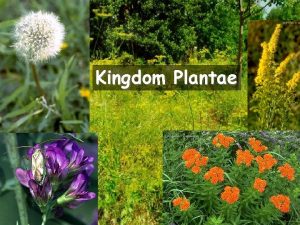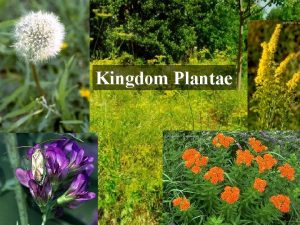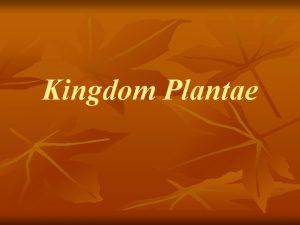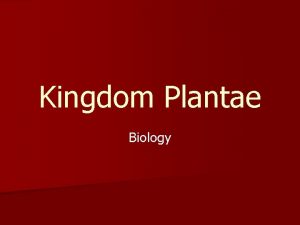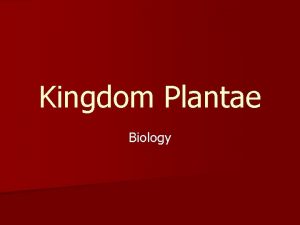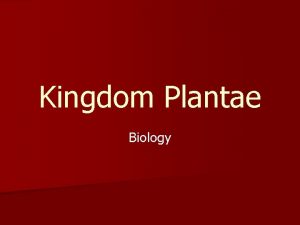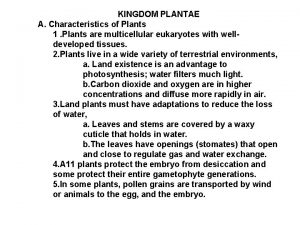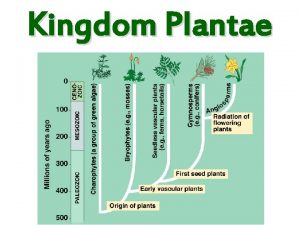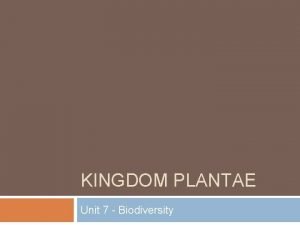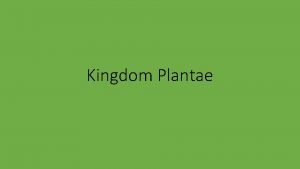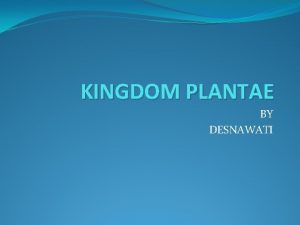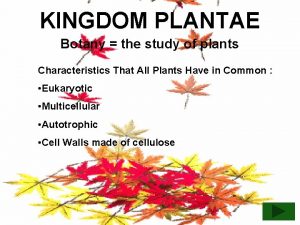Kingdom Plantae Characteristics of Plants All plants are

























- Slides: 25

Kingdom Plantae

Characteristics of Plants: ü All plants are multicellular eukaryotes ü All plants are made of tissues and organs.

Characteristics of Plants: ü All plants have a cell wall. ü Contain chlorophyll for photosynthesis ü Autotrophs!

Living on Land • Plants must find ways to get water, support their bodies and reproduce!

Plant Parts: Leaves • Leaves: capture sun’s energy for photosynthesis – Contain openings called stomata that can take in CO 2 and stop water loss

Plant Parts: Stems • Stems: carries substances from roots to leaves & provides support

Plant Parts: Roots • Roots: anchor plant and absorb water and minerals

Transporting Materials • Water taken in at roots • Food made in leaves • Vascular Tissue: tubes inside the plant that transport material up and down!

Vascular Tissues • Xylem: tissue that carries water up to plant • Phloem: tissue that carries food down to plant

Carnation Demo

Plant Response • Tropism: a plant’s growth response towards or away from a stimulus • EX: Phototropism: growth towards light

Video Review

Classification of Plants: ü Nonvascular - no system of water transportation ü Vascular - contain vascular tissues that transfer water & food

Nonvascular Plants: • Transport materials through absorption • Low to the ground • Must live close to water

Examples • Mosses • Hornworts • Liverworts

Vascular Plants: ü Most plants are Vascular ü Has a water transport System! ü Have stems, roots, and leaves!

Seedless Plants • Ferns, Horsetail, Club Moss • All use spores to reproduce

Seed Plants • Use seeds to reproduce • Have stems, leaves, and roots • Much more numerous!

Seed Dispersal • Seeds protect the young plant • Scattered by wind, water, or animals • Germination: when the seed begins to grow

Gymnosperms VS. Angiosperms Gymnosperms Angiosperms • Produce “naked” seed • Produce flowers & fruits – No protective covering • Needle-like leaves and deep root system • Adapted to live in dry/cold places • Seed protected by fruit or covering • Live almost everywhere

Gymnosperms • Cycads, Gingkos, Gnetophtyes, & Conifers • Most reproduce using cones that contain pollen

Angiosperms • Examples: Palm trees, fruit trees, flowering plants, etc. • Reproduce using pollen

Monocots VS. Dicots Monocots • “mono” means one • one cotyledon (seed leaf) • Leaves are long a thin in multiples of 3 Dicots • “di ” means two • two cotyledons • Wide branching leaves in multiples of 4 or 5

Examples Monocots Dicots • Corn • Tulips • Wheat • • Tomatoes Maple trees Sunflowers Roses

Plant Review
 Antigentest åre
Antigentest åre Cool protists
Cool protists Kingdom plantae characteristics
Kingdom plantae characteristics Kingdom fungi domain
Kingdom fungi domain Character of plantae
Character of plantae Plantae characteristics
Plantae characteristics Dunia plantae
Dunia plantae Archaebacteria characteristics
Archaebacteria characteristics Plantae kingdom characteristics
Plantae kingdom characteristics Kingdom plantae characteristics
Kingdom plantae characteristics Old kingdom middle kingdom new kingdom
Old kingdom middle kingdom new kingdom Old kingdom middle kingdom new kingdom
Old kingdom middle kingdom new kingdom Roman empire
Roman empire Capital of egypt during the old kingdom
Capital of egypt during the old kingdom Plante characteristics
Plante characteristics Classification system in biology
Classification system in biology Plantae kingdom
Plantae kingdom Domain
Domain Protista, fungi, plantae, animalia *
Protista, fungi, plantae, animalia * Plantae prokaryotic or eukaryotic
Plantae prokaryotic or eukaryotic Ferns and algae kingdom
Ferns and algae kingdom Animal kingdom cladogram
Animal kingdom cladogram Subkingdom of plantae
Subkingdom of plantae Pyrrophyta
Pyrrophyta Which kingdom is autotrophic
Which kingdom is autotrophic Kingdom plantae chart
Kingdom plantae chart




